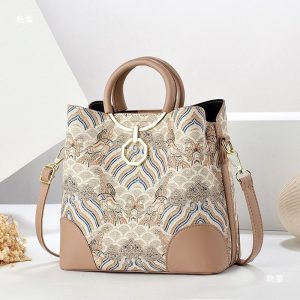Background
Purple clay, known as zisha in Chinese, is a unique type of clay found predominantly in the Yixing region of Jiangsu province, China. Revered for centuries by tea connoisseurs, this material is prized not just for its aesthetic appeal but for its functional properties that significantly enhance the tea brewing experience. Unlike conventional ceramics, purple clay is unglazed, porous, and rich in minerals like iron oxide, which contribute to its distinctive color and texture. The very essence of a purple clay teapot lies in its material—each piece is a testament to natural geology and artisan craftsmanship, making understanding its composition fundamental for any tea enthusiast or collector.
Why It Matters
There are three primary types of purple clay, each with distinct characteristics and origins. Zini, or purple clay, is the most common and features a deep, reddish-brown hue due to its high iron content. Zhuni, or red clay, is rarer and possesses a brighter, orange-red color with a smoother texture; it is often considered the premium variety due to its finer grain and superior heat retention. Duan ni, or fortified clay, is a blend of different clays and minerals, resulting in varied colors like green, yellow, or beige, offering a balance between aesthetics and functionality. Each type influences the teapot’s performance, affecting heat distribution, porosity, and how it interacts with different tea types over time.
According to a recent study published in the Journal of Ceramic Science and Art (2023), the mineral composition of authentic Yixing purple clay includes trace elements like silicon, aluminum, and iron, which create micro-pores that allow the teapot to ‘breathe’ during brewing. This porosity enables the clay to absorb the tea’s essential oils and flavors, gradually seasoning the pot and enhancing the depth and richness of subsequent brews. The study also highlighted that imitation clays, often mixed with additives, lack this natural porosity, leading to inferior tea quality and no long-term seasoning benefits, emphasizing the importance of material authenticity.
The benefits of using a genuine purple clay teapot are manifold, rooted in both tradition and practical advantages. Its excellent heat retention ensures water stays at optimal temperatures longer, perfect for brewing oolong, pu-erh, or black teas that require sustained heat. The porous nature not only seasons the pot but also helps mellow the tea’s tannins, reducing bitterness and creating a smoother, more rounded flavor profile. Over time, a well-used teapot develops a patina that reflects its history with the tea drinker, making each pot uniquely personal. Additionally, the natural, unglazed surface is eco-friendly and free from chemical coatings, aligning with a pure, traditional tea experience.
When selecting a purple clay teapot, avoid common pitfalls such as opting for extremely low-priced items, which are often mass-produced fakes using dyed or blended clays. These imitations may emit chemical odors when heated and fail to improve with use. Instead, look for signs of authenticity: a slightly gritty texture, subtle color variations, and a resonant ring when tapped lightly. Purchase from reputable dealers or artisans who provide details on the clay’s origin. Seasoning your teapot correctly—by rinsing with hot water and brewing tea multiple times before first use—is crucial to unlock its potential and avoid imparting unwanted flavors.
Current trends in 2024 show a growing interest in sustainable and artisan-crafted purple clay teapots, with collectors seeking unique, hand-shaped pieces that tell a story. Modern designs are blending traditional techniques with contemporary aesthetics, appealing to younger audiences while preserving cultural heritage. There’s also a rise in using these teapots for specialty teas like aged white or dark teas, leveraging their properties to enhance complex flavor profiles. Social media and online communities are driving awareness, making education on material authenticity more accessible than ever.
In comparison to other materials like porcelain, glass, or cast iron, purple clay stands out for its ability to interact dynamically with tea. Porcelain and glass are neutral, not altering flavor but offering clarity and ease of cleaning. Cast iron retains heat well but is heavy and can rust if not maintained. Purple clay, however, provides a middle ground—improving flavor over time without chemical interference, though it requires dedicated use for one tea type to prevent flavor crossover. This makes it ideal for enthusiasts invested in the ritual and nuance of tea brewing, where the pot becomes as essential as the leaves themselves.
You May Also Like
Ancient Craftsmanship & ICH Herbal Beads Bracelet with Yellow Citrine & Silver Filigree Cloud-Patterned Luck-Boosting Beads
Original price was: $128.00.$89.00Current price is: $89.00. Add to cart- handmade-tote-ethnic-boho-large-capacity-shoulder-bag/" class="woocommerce-LoopProduct-link woocommerce-loop-product__link">Add to cart


Guangxi Zhuang Brocade Handmade Tote – Ethnic Boho Large-Capacity Shoulder Bag
Original price was: $172.00.$150.00Current price is: $150.00. Add to cart Handwoven Zhuang Brocade Tote Bag – Large-Capacity Boho Shoulder Bag
Original price was: $178.00.$154.00Current price is: $154.00. Add to cartThe Palace Museum Paper-Cut Light Art Fridge Magnets: Chinese Cultural Style Creative Gift Series
Price range: $27.00 through $36.00 Select options This product has multiple variants. The options may be chosen on the product page






